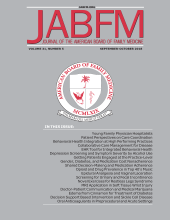Abstract
Purposes: To evaluate 2 commonly overlooked sources of error in measuring blood pressure (BP) in the office, improper patient positioning and frequency of terminal digit bias (TDB) using manual and automated (BP) devices.
Methods: BPs recorded by 3 nurses using manual and automated devices were analyzed for TDB. In the next part of the study, 294 patients were recruited and tested with each patient's BP measured twice in the table position and compared with BP measured in the chair position. To eliminate concern for position sequence, a randomized controlled trial was initially conducted.
Results: Significant TDB for the digit zero was identified in BPs measured by all nurses using a manual device. No such bias was identified for any nurse when measuring BP with an automated device. For the positional study, the randomized controlled study showed no significant sequencing effect therefore the sequence of table then chair BP measurements was adopted. Significant BP lowering was observed in 128 patients (42.7%) in the chair compared with the table position. Misclassification of prehypertension and hypertension would have occurred in 15.3% and 16% of patients, respectively, when BP was recorded in the table instead of the chair position.
Conclusions: Significant TDB was identified for all nurses when using a manual but not an automated device. Patient positioning on the examination table resulted in elevations of systolic and diastolic BPs.







